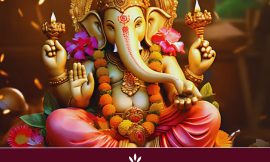Discover how precise timing during Dwadashi Tithi ensures spiritual harmony, prevents offences, and amplifies the sanctity of your Shattila Ekadashi observance.
In the observance of Ekadashi, breaking a fast, known as parana, is crucial. Shattila Ekadashi Parana is customarily conducted the day after the Ekadashi fast, after daybreak. To maintain the purity and effectiveness of this act, certain guidelines and timelines must be followed.
In Parana, timing is crucial.
Importance of Timing in Paraná
The timing of Shattila Ekadashi Parana is of paramount importance. It must be performed during Dwadashi Tithi, the lunar phase immediately succeeding Shattila Ekadashi. Performing Parana outside Dwadashi Tithi—either before it begins or after it ends—is considered a significant transgression in Hindu dharma.

Avoiding Hari Vasara
Refusing to break the fast during Hari Vasara is an important consideration when doing Parana. Hari Vasara refers to the first one-fourth of Dwadashi Tithi. Because it is deemed undesirable to break the fast during Hari Vasara, devotees are advised to wait until the festival is ended. In order to ensure adherence to the dharmic precepts, the fast should only be broken when this period of time has elapsed.
Pratahkal is preferred.
The early morning hours following sunrise, or Pratahkal, are the most auspicious times to conduct Parana. This time frame is linked to spiritual focus and purity and is said to be ideal for religious activity. However, breaking the fast at Madhyahna, which is midday, is not advised. It is acceptable to observe Parana after Madhyahna; nevertheless, if one is unable to do so during Pratahkal due to unforeseen circumstances, it is acceptable to do so later.

Differences in the Observance of Shattila Ekadashi
Ekadashi fasting is sometimes observed for two days in a row. In these situations, the advice differs according to the devotee’s spiritual objectives and stage of life:
1. The Smartha Tradition It is traditional for homeowners (Smartha) to observe the fast on the first day. They may carry out their religious obligations without interfering with their everyday lives because this is in line with their family and material obligations.
2. A Different Shattila Ekadashi For certain groups, the second day, also known as the alternative Ekadashi, is recommended. These groups consist of widows, sannyasis (renunciates), and those pursuing moksha (liberation).
As a result of establishing a single festival for devotees of Bhagwan Vishnu, the alternative Ekadashi typically coincides with the Vaishnava custom for Smartha practitioners.
3. Dual Observance: Two days of fasting are advised for pious people who are devoted to Bhagwan Vishnu. It is believed that using this method will deepen their spiritual connection and demonstrate a strong commitment to God.
Aspects of Practicality and Spirituality
Deeply rooted in the Shattila Ekadashi fasting and Parana rituals that follow are both spiritual and practical wisdom. Observing the fast fosters discipline, self-control, and a heightened focus on devotion. Breaking the fast at the right time ensures that the spiritual benefits of the fasting period are fully realised. Devotees uphold the integrity of the ceremony and strengthen their dedication to dharma by closely following the guidelines of Parana.
Conclusion
The subtleties of Parana, such as avoiding Hari Vasara, favouring Pratahkal, and making allowances for particular life phases, emphasise the ritual’s complexity and versatility even though Ekadashi fasting is a highly respected practice for all Hindus. Devotees link themselves with the cosmic order and welcome Bhagwan Vishnu’s blessings into their life by abiding by these rules.





